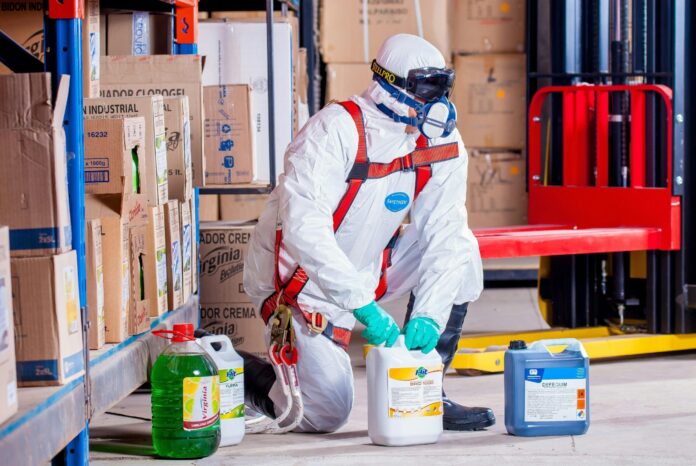The technology is useful in many aspects of life. The potential of technology is almost limitless, and with the increasing use of AI and machine-learning, the limits are being constantly pushed.
Technology has touched every aspect of our lives. There is a tech, software or product for every aspect of life, whether it’s personal care, entertainment, healthcare or business practices.
Health and safety is one area that has seen massive benefits from technology. No matter where you are, working safely within your limits is important.
Let’s look at some statistics regarding health and safety on the job.
- The ILO (International Labor Organization) reports that approximately 395 millions workers suffer non-fatal injuries worldwide, highlighting the global scope of workplace safety concerns.
- In the world, 2.9 million people are killed in workplace accidents. A Honeywell survey revealed that 68% of workers don’t feel safe at their workplace.
- Bangladesh has often been cited as having the worst workplace safety and health, while Wikipedia lists India, Pakistan Cuba and the Dominican Republic.
- The UK is often ranked first for workplace health and safety, followed by Bahrain, Iceland, Finland and the Netherlands. This post will explore some of the ways that technology is revolutionizing workplace health and safety.
Safety Management
Electronic devices for health and safety are used in many industries, and even by individuals. Many of the tech devices used in this capacity are very similar to those that people use at home for their health. They are modified to include more features that enhance safety for the wearer. Wearable devices, such as smartwatches and glasses, can track employees, monitor vital signs and detect hazards. These monitors enable employers to ensure each employee is working safely. They are traceable which is ideal for remote employees or those who access dangerous terrain or work alone. They also allow others to provide assistance and support using real-time information.
Suppose an employee is working in dangerous conditions. Wearable smartwatches that can be viewed by supervisors and management can alert others when heart rates are elevated or distress is present, which could indicate that the employee does not feel safe and may need assistance or to leave the area. This can improve health and safety.
AIAI is not a new technology, but it has many applications. AI’s ability of analyzing large volumes of data allows it to identify patterns and behaviors which pose a risk to businesses and individuals. This makes it a proactive tool for safety management.
For example, machine learning can be trained to identify hazards in the workplace, provide safety figures for work being performed, identify risks, or even help allocate the right staff for improved results. To pinpoint the right person to complete specific tasks.
AI can provide real-time risk detection and alerts. For example, by analyzing footage, AI can determine if employees are wearing the right PPE, using the proper lifting technology, and following safety protocols and equipment. AI can be used for employee behavior analysis, alerting you when employees are distracted or fatigued. This can help reduce the risk of harm and mistakes by addressing it immediately. It can also help with accident analysis, helping you to learn what went wrong, and how, and prevent the same incident from happening again. Drones and Robotics (
)Again, it is not a new concept, but the use and adoption of drones and robots to perform more dangerous or precarious tasks in order to protect the health and safety for employees has increased. The advancement of technology has allowed for drones and robots to have more features, which allows them to be equipped with higher accuracy and skills.
People are becoming more aware of robotics through the use delivery robots. They can prevent employees from overworking for deliveries and ensure that parcels arrive on time.
Many businesses also use robotics to perform repetitive manual tasks, which can be physically demanding. This reduces or eliminates the need for humans, resulting in fewer workplace accidents. These tasks include handling hazardous materials, welding, lifting heavy objects and painting.
Robotics, drones, and other devices are being used in high-risk situations, such as in confined spaces or at heights, to reduce the need for human exploration. In the past, dangerous areas included power lines, and inaccessible areas such as oceans or rooftops. People had to climb them to perform repairs or identify problems.
Drones today are equipped with an array of technology such as infrared cameras, laser sensors, and zoom capabilities. DJI Matrice 4T (19459029) has many of these features, which improve the safety and results of the drone and the company. Cloud Computing
(19459023)
Although not as popular as drones or robotics, cloud computing still contributes to workplace health and safety. The ease of recording and storing information that can be accessed easily means improved record keeping for employees and different aspects of a company. You can store complete files for training and risk assessment, occupational healthcare records, personal details, etc. Cloud computing allows anyone to access information at any time and anywhere, making it easier to transfer important details. Cloud computing can be used to update safety procedures, conduct refresher training or log incidents in order to improve the safety record of your company. VR for Training
Virtual Reality is a fun, immersive technology that allows you to enter into a virtual world with a headset. You can experience different environments from where you stand. It is used for entertainment all over the globe. It has many practical applications in health and safety.
VR allows employees to experience a comprehensive and immersive training experiencein order to develop their skills. They can practice hazardous tasks in order to make their work safer. They can also learn how they react to different scenarios and environment. Wearable technology can enhance the information and accuracy.
VR allows people to be as hands on as possible without putting them in danger before they are ready. This is not only beneficial to the company, as it reduces injuries and accidents. It also ensures those who are tasked with dangerous jobs are properly equipped before they go into the field.
Safety and health in the workplace are paramount. As you can see, technology can be used in a variety of ways to create a safer work environment. A safer workplace makes employers and clients happier, and it improves standards because everyone can manage risks and work to their best abilities regardless of the surroundings. It’s safe to say that technology has negatively impacted health and safety at the workplace.


